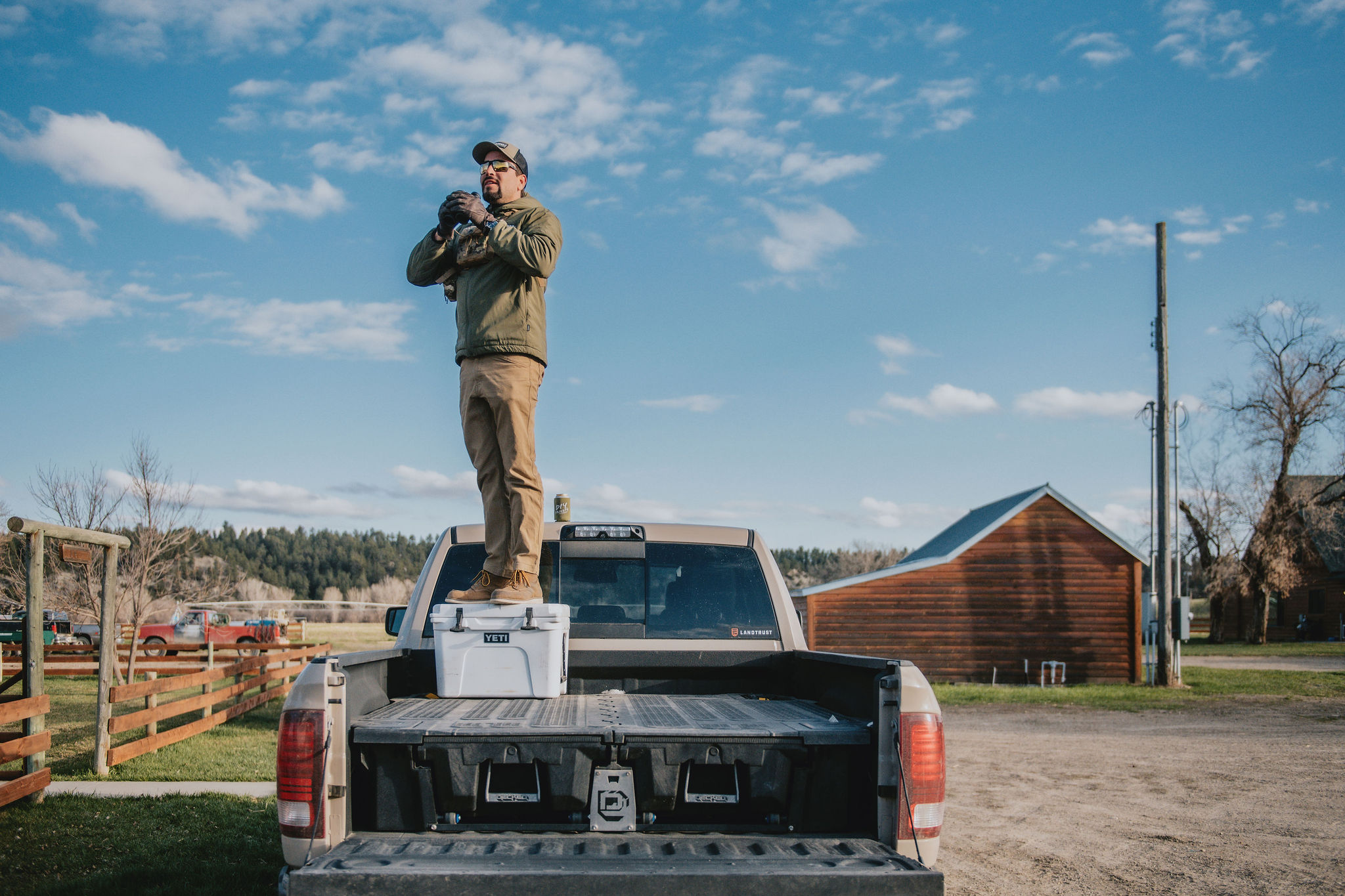The Guide to Finding & E‑Scouting Private Land
1. Introduction
Private land access is the new frontier for hunters. With rising pressure on public lands, private properties offer solitude, better habitat, and more consistent success.
LandTrust’s unique value: Direct connection to landowners (no outfitters), transparent property details, simple online booking, and access to 1M+ acres nationwide.
2. How to Find Private Land for Hunting
Step‑by‑Step: Research → Network → Book
- Research online
- Use county GIS/assessor maps and state wildlife pages to understand ownership and habitat.
- Note boundaries, neighboring land use, and potential access points.
- Network locally
- Talk with farmers, ranchers, and local businesses.
- Join conservation groups and local hunting chapters.
- Use trusted platforms
- Browse and book properties on LandTrust to avoid cold calls and guesswork (photos, habitat info, rules, reviews, and direct landowner messaging).
- Scout in person
- Confirm sign, pressure, and access. Respect posted rules.
State‑by‑State Differences
Rules and opportunities vary widely across states.
- Montana: Block Management Areas (BMAs) expand access on private lands.
- Kansas: Walk‑In Hunting Access (WIHA) opens private parcels seasonally.
- Iowa: Mostly requires direct landowner permission.
➡️ Download our State‑by‑State Private Land Access Guide
“How to find private hunting land near me” — Local Search Tips
- Use queries like “private hunting land near me”, “hunting leases in [State/County]”, and “day lease hunting [Species] [State]”.
- Check regional forums/Facebook groups, plus county extension offices.
- Save promising properties and compare habitat, access, and rules side‑by‑side.
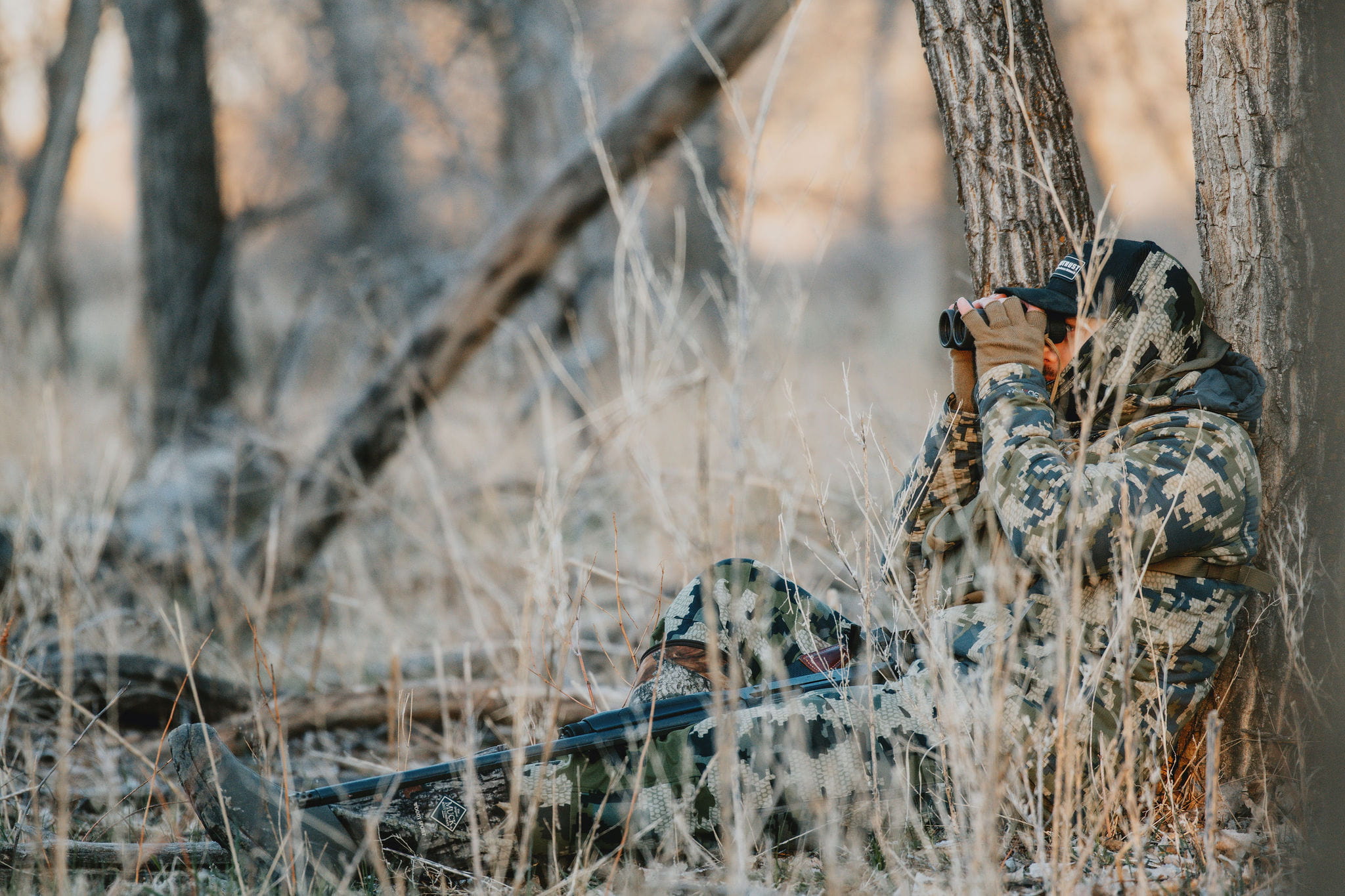
3. E‑Scouting Private Land: Tools & Tactics
What Is E‑Scouting & Why It Matters
E‑scouting means evaluating properties with digital maps, satellite imagery, and data layers before stepping on the land. On private land, it helps you pinpoint hidden food plots, secure access routes, low‑pressure corners, and realistic stand/blind setups.
Best Apps (Honest, Side‑by‑Side Notes)
- onX Hunt — Most reliable property boundaries; robust waypointing and public/private overlays.
- HuntStand — Strong layering tools, notes, and weather integrations.
- HuntWise — Budget‑friendly; useful prediction tools and live weather.
- BaseMap — Affordable alternative with offline maps and gear integrations.
- Google Earth — Powerful for historical imagery and 3D terrain context (free).
How to Use Layers, Boundaries & Landowner Info (Private‑Land Focus)
- Property Boundaries: Confirm edges to avoid trespass; mark buffers along fence lines.
- Vegetation/Crop Layers: Identify food sources, mast trees, and thermal cover.
- Hydrology & Terrain: Pinch points at creek crossings, saddles, benches, and oxbows.
- Access Planning: Map wind‑friendly entry/exit routes that avoid bedding/feeding zones.
- Landowner Considerations: Note livestock areas, active ag operations, and closed zones.
Gap to Remember: Most e‑scouting advice is public‑land centric. On private land, prioritize quiet access, respecting working lands, and aligning with property rules.
Quick How‑To (Featured‑Snippet Style):
- Choose a mapping app (onX/HuntStand/Google Earth).
- Add topo, vegetation, parcel, and hydrology layers.
- Mark food/bedding/edges, then identify likely travel corridors.
- Plan wind‑smart entry/exit.
- Validate on‑site and adjust.
4. Getting Permission: Tips, Templates & Etiquette
How to Approach Landowners
- In person: Dress neatly, keep it brief, avoid busy times (early mornings, meals).
- Phone: Be polite and specific about dates, party size, and species.
- Letter/Email: Introduce yourself, outline your experience, reference safety/ethics, and offer contact details.
What to Say (and What NOT to Do)
Do:
- Explain exactly when and what you’d like to hunt.
- Acknowledge livestock, gates, roads, and trash policies.
- Offer to share meat, help with chores, or provide a certificate of insurance if requested.
Don’t:
- Show up unannounced during the season.
- Overpromise favors you can’t keep.
- Assume past permission guarantees future permission.
Downloadable: Permission Letter Template
➡️ Download the Hunting Permission Letter Template
Snippet Answer: Be brief, respectful, and specific. State dates/species, confirm rules, offer help, and accept “no” gracefully. Written permission protects both parties.
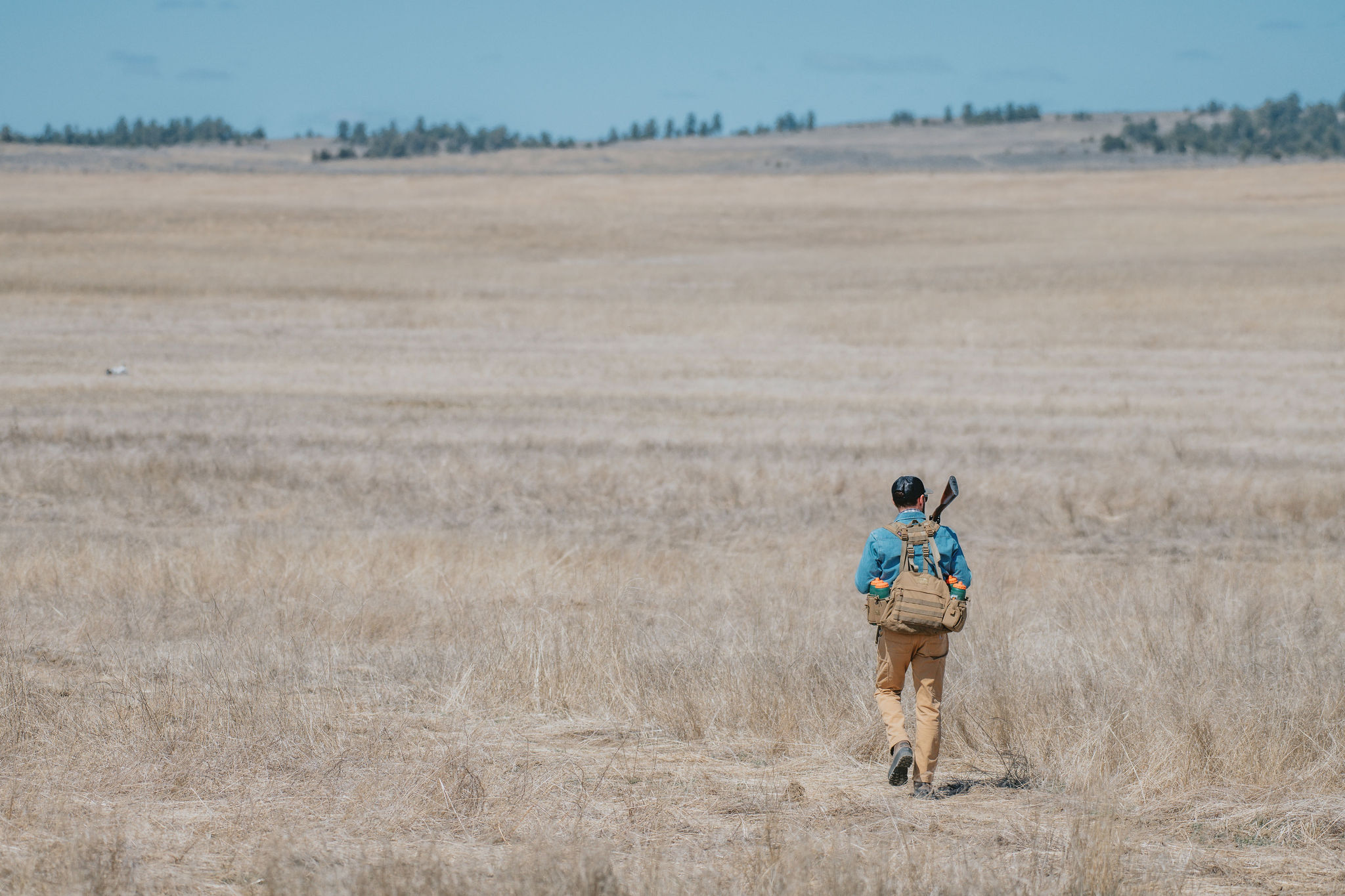
5. Lease vs. Permission: What’s Best for You?
Leasing
- Pros: Guaranteed access, clear terms, often better‑managed habitat, less uncertainty.
- Cons: Higher cost; may require seasonal or multi‑year commitment.
Permission
- Pros: Low/zero cost, builds local relationships, flexible.
- Cons: Unpredictable availability, changing rules, access can be revoked.
When to Lease: You want consistent access and control over your season plan. When to Seek Permission: You’re exploring a new area or hunting casually.
Snippet Answer: A lease is paid, guaranteed access with defined terms; permission is free/low‑cost but can change at any time.
6. Public vs. Private Land: The Real Differences
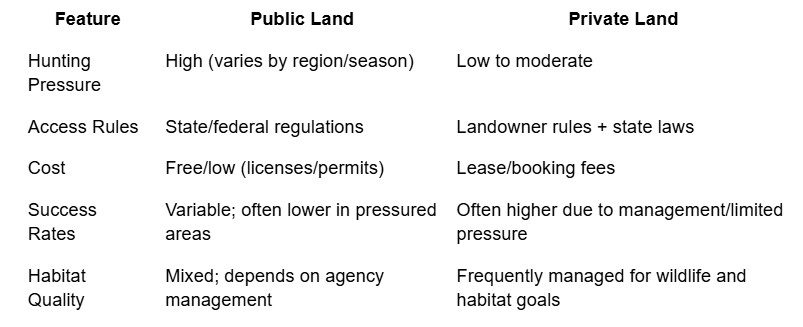
Snippet Answer: Public land is cheaper and widely accessible but more crowded; private land typically has less pressure, clearer expectations, and higher odds of consistent encounters.
7. State & Federal Hunter Access Programs
- Montana — Block Management Areas (BMAs)
- Pennsylvania — Hunter Access Program
- Michigan — Hunting Access Program (HAP)
- Nebraska — Open Fields and Waters (OFW)
- Kansas — Walk‑In Hunting Access (WIHA)
- Idaho — Access Yes!
- New York — Cooperative Hunting Areas
➡️ See Full List of State & Federal Hunter Access Programs
Snippet Answer: Most states run voluntary private‑land access programs that offer seasonal hunting opportunities on working farms and ranches—check your state game agency for maps, enrollment rules, and dates.
8. Conclusion & CTA
Private land hunting lets you avoid crowds, plan smarter, and enjoy better habitat. With modern e‑scouting tools and a direct line to landowners, you can turn map pins into real memories.
Ready to find your next spot?
- Explore properties and book directly on LandTrust
- Download the State‑by‑State Access Guide
- Grab the Permission Letter Template and start your outreach.
Call to Action: Explore private hunting properties on LandTrust today and secure your dates before the season opens.
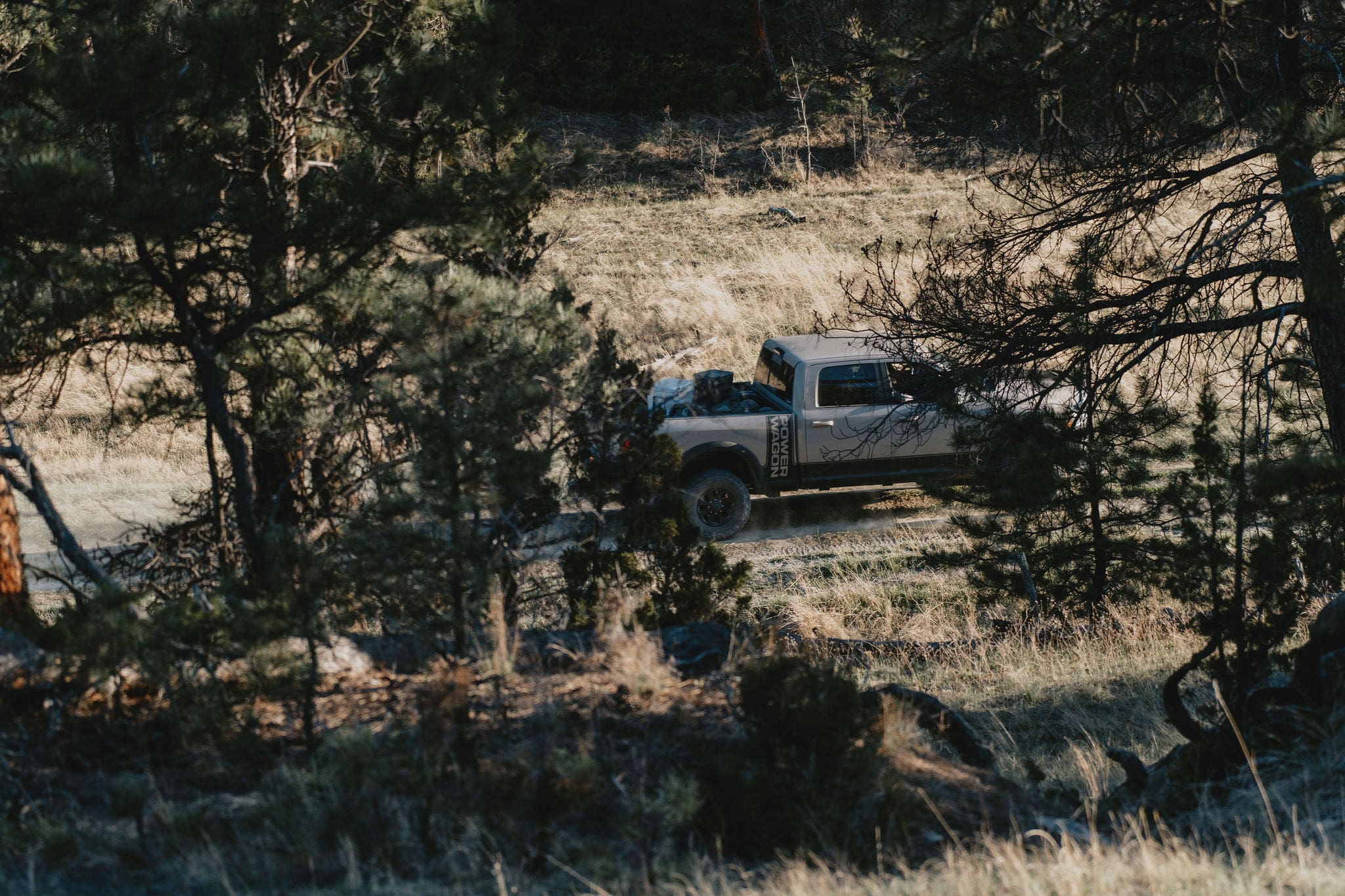
People Also Ask: Finding & E‑Scouting Private Land
Q: How do I get permission to hunt on private land?
A: The best way is to contact the landowner directly — in person, by phone, or with a polite letter. Introduce yourself, explain your hunting goals, and offer to respect all rules. Many hunters offer to help with chores or share a portion of their harvest. Booking through LandTrust is another option for guaranteed access without cold calls.
Q: What is the cheapest way to hunt private land?
A: Pursue free permission from a landowner, use state‑run access programs (e.g., BMAs, WIHA), or choose day leases on LandTrust instead of full‑season leases.
Q: What is e‑scouting for hunting?
A: E‑scouting uses digital maps, satellite imagery, and online data to evaluate spots before visiting. For private land, focus on boundaries, access routes, habitat features, and landowner info. (See: E‑Scouting Private Land: Tools & Tactics).
Q: Which is better—public or private land hunting?
A: Private land typically has less pressure, clearer expectations, and more consistent success; public land is affordable and widely accessible but can be crowded. (See: Public vs. Private Land: The Real Differences).
Q: What are the best apps for e‑scouting private land?
A: onX Hunt, HuntStand, HuntWise, BaseMap, and Google Earth. Each has strengths in boundaries, layering, price, or 3D views. (See: E‑Scouting Private Land: Tools & Tactics).
Q: Can I e‑scout private land without permission?
A: Yes—using public map data and imagery is fine, but stepping onto the property requires permission or a booked lease. (See: Getting Permission: Tips, Templates & Etiquette).

